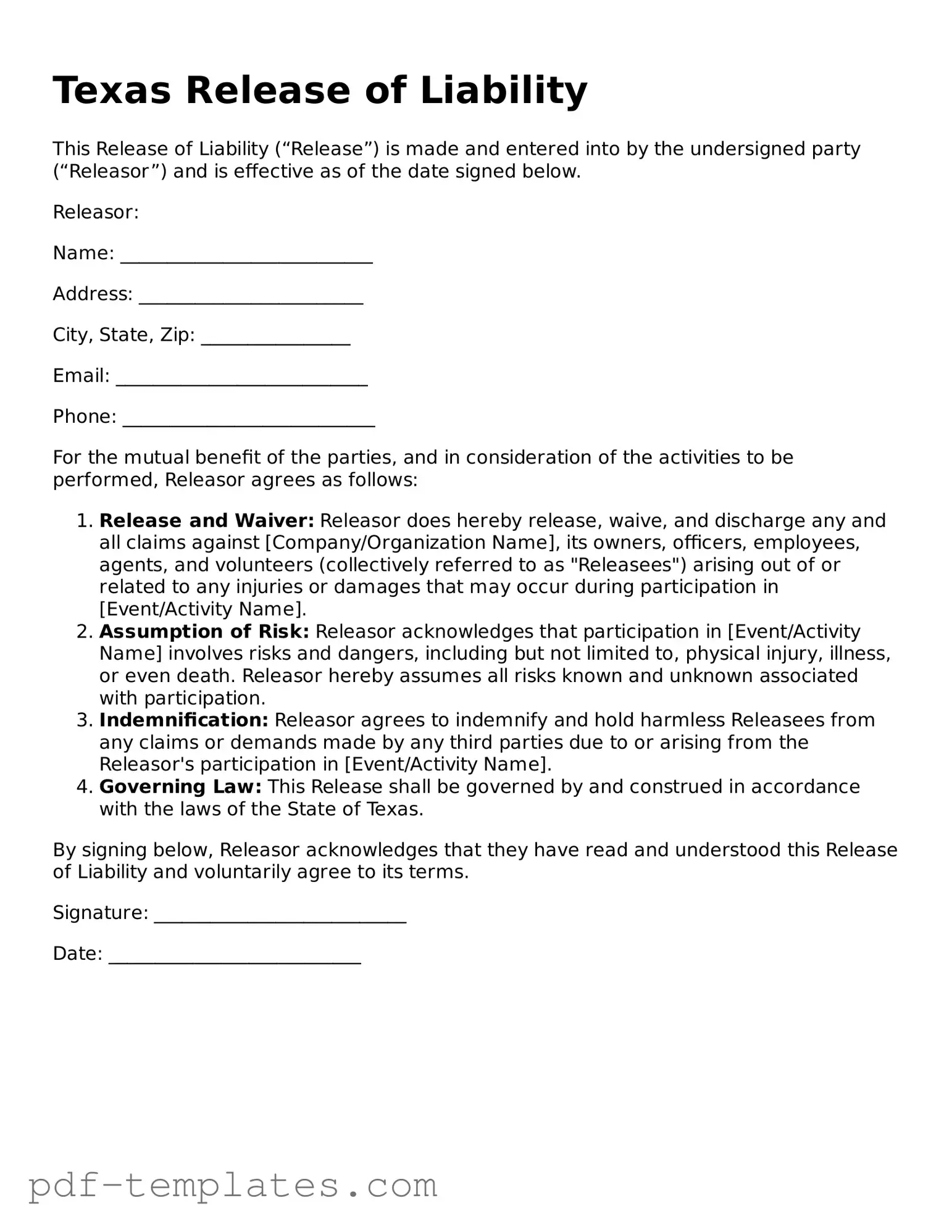The Texas Release of Liability form is similar to a Waiver of Liability form, which is often used in various activities, such as sports or recreational events. Both documents aim to protect the organizer or provider from claims resulting from injuries or damages that may occur during the activity. By signing a Waiver of Liability, participants acknowledge the risks involved and agree not to hold the organizer responsible for any accidents. This mutual understanding helps create a safer environment, as participants are informed of potential dangers before engaging in the activity.
Another document akin to the Texas Release of Liability is the Indemnity Agreement. This agreement shifts the financial responsibility for damages or injuries from one party to another. In many cases, businesses use indemnity agreements to protect themselves from lawsuits stemming from their operations. When a party signs an indemnity agreement, they are agreeing to cover any costs or claims that may arise, similar to how a release of liability serves to limit the liability of the provider. Both documents are essential for managing risk in various contexts.
The Texas Release of Liability also bears resemblance to a Consent to Treat form, commonly used in medical settings. This form allows healthcare providers to treat a patient while informing them of the potential risks involved in a procedure. By signing, patients give their consent and acknowledge that they understand the risks associated with treatment. Like the release of liability, the consent to treat form aims to protect the provider from legal claims, ensuring that patients are aware of the inherent risks before proceeding with medical care.
The California General Power of Attorney form is a crucial legal document that empowers an individual, known as the principal, to appoint another person, referred to as the agent, to handle financial matters on their behalf. This form proves particularly beneficial when the principal cannot manage their financial affairs, whether due to illness, absence, or incapacity. It encompasses a broad spectrum of financial decision-making authority, from managing bank accounts to overseeing real estate transactions. For more information on creating or modifying such a document, you may visit formcalifornia.com.
Lastly, the Texas Release of Liability is similar to a Rental Agreement, particularly in scenarios where rental equipment is involved. Rental agreements often include clauses that limit the liability of the rental company in case of damage or injury caused by the rented item. By signing the rental agreement, the renter accepts responsibility for the equipment and agrees to hold the rental company harmless for any accidents that may occur. Both documents serve to clarify the responsibilities of each party and protect against potential legal issues.
